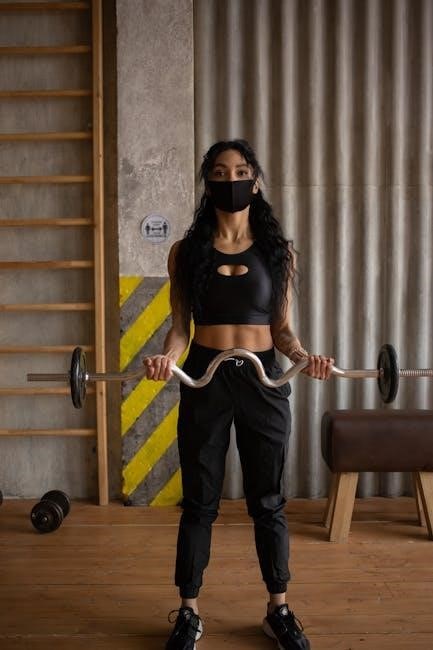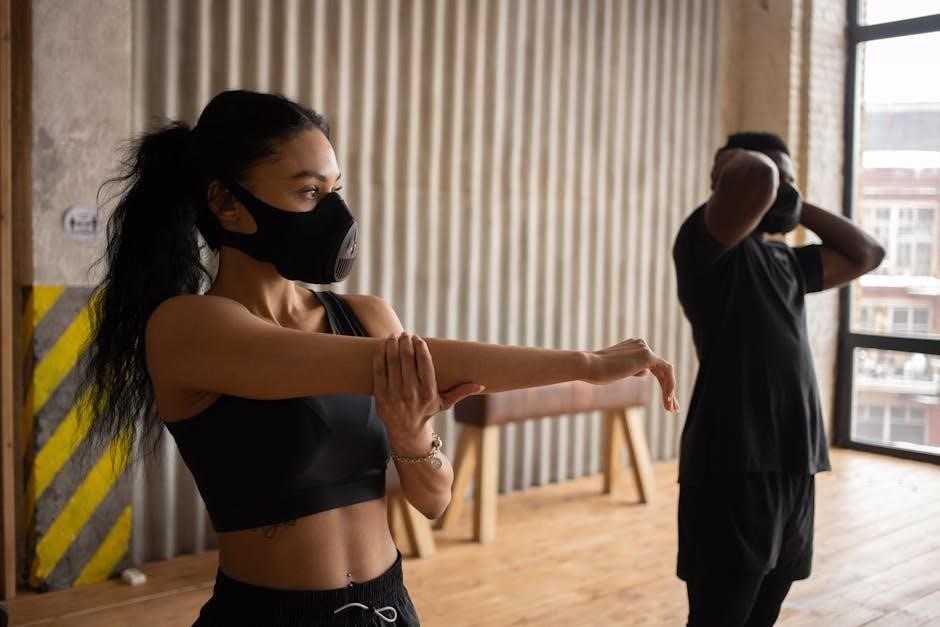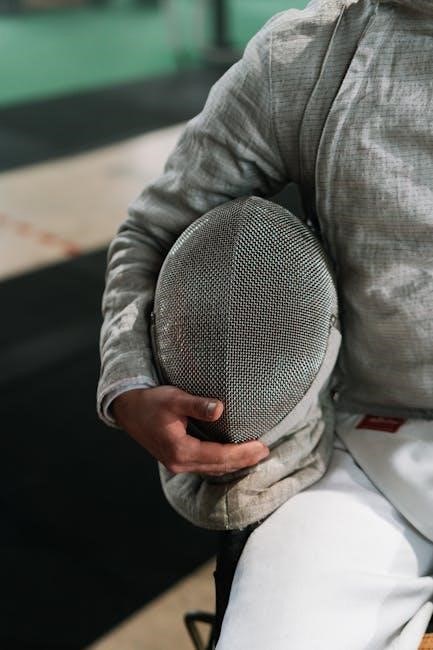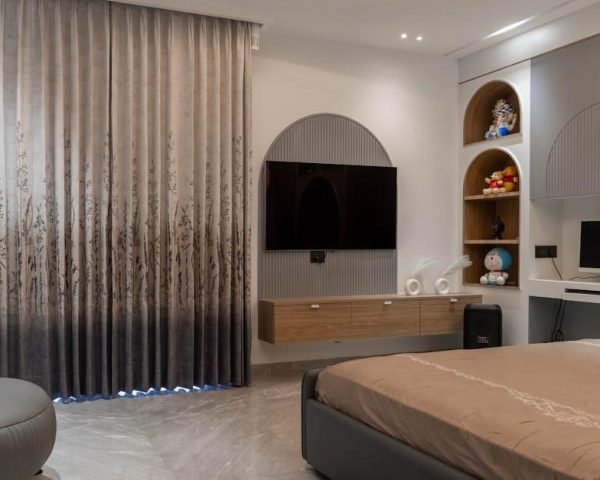A proper CPAP mask fit is essential for effective sleep therapy‚ ensuring comfort and preventing air leaks. This guide provides step-by-step instructions‚ tips‚ and troubleshooting to help you achieve the best fit for your CPAP mask.
Importance of Proper CPAP Mask Fit
A proper CPAP mask fit is crucial for effective sleep therapy. It ensures that air is delivered consistently‚ preventing leaks and maintaining the correct pressure. A well-fitting mask enhances comfort‚ reducing the risk of skin irritation or pressure sores. Additionally‚ it minimizes disruptions during sleep‚ such as noise or air escaping‚ which can impact both the user and their partner. Proper fit also improves the overall effectiveness of CPAP therapy‚ helping to manage sleep apnea symptoms like daytime fatigue and cognitive fog. Without a good seal‚ therapy may be less effective‚ leading to poor sleep quality and related health issues. Regularly checking and adjusting the mask fit is essential‚ as even small changes in weight or facial structure can affect how the mask sits. By prioritizing a proper fit‚ users can maximize the benefits of CPAP therapy and enjoy better sleep and health outcomes.

Measuring and Sizing Your CPAP Mask
Accurate measurements are key to selecting the right CPAP mask size. Use a ruler or tape measure to assess your nasal bridge and mouth width. Measure from the bridge of your nose to the bottom for nasal masks. Ensure the mask fits snugly without pressure‚ as improper sizing can cause leaks or discomfort. Different mask types require specific measurements‚ so refer to the manufacturer’s sizing guide for precise fit.
Methods for Measuring

Accurate measurement is crucial for selecting the right CPAP mask size. Start by using a ruler or tape measure to assess your facial dimensions. For nasal masks‚ measure the width of your nose from one nostril to the other. For full-face masks‚ measure from the bridge of your nose to the bottom of your chin. Ensure the ruler is straight and level for precise results. Some manufacturers provide sizing templates that can be printed and fitted to your face. Alternatively‚ use the ruler method: measure the distance between the bridge of your nose and the edge of your mouth for nasal masks‚ or from the bridge of your nose to the bottom of your chin for full-face masks. Record these measurements and compare them to the manufacturer’s sizing chart. Digital tools‚ like apps‚ can also guide you through the process. Always double-check your measurements to ensure accuracy and a proper fit.

Factors Affecting Fit
Several factors influence the fit of a CPAP mask‚ including facial structure‚ skin sensitivity‚ and weight changes. The shape and size of your nose‚ as well as the contour of your face‚ play a significant role in determining the right mask size. Skin sensitivity or conditions like rosacea may require a mask with extra cushioning or a different material. Weight fluctuations can alter facial dimensions‚ potentially affecting the fit over time. Additionally‚ the type of mask—nasal‚ nasal pillow‚ or full-face—affects how it sits on your face. Headgear tightness is another critical factor; overly tight straps can cause discomfort‚ while loose straps may lead to air leaks. Even hairstyle or facial hair can impact the seal and comfort of the mask. Considering these factors ensures a personalized fit‚ improving both comfort and therapy effectiveness. Regularly reassessing these elements helps maintain an optimal fit over time.

Step-by-Step Fitting Process
Place the mask on your face gently‚ ensuring proper alignment. Adjust the headgear for a snug but comfortable fit. Check for air leaks by gently pressing the mask. Ensure the mask feels secure and comfortable‚ with a proper seal. Refer to the user guide for specific fitting instructions.
Step-by-Step Guide
Fitting your CPAP mask correctly is crucial for effective therapy. Start by holding the mask in one hand and the headgear in the other. Place the mask over your nose or mouth‚ depending on the type‚ ensuring it sits naturally. Adjust the headgear straps to secure the mask without overtightening. For nasal masks‚ the cushion should rest gently on your nose. For full-face masks‚ the cushion should cover your nose and mouth without pressing too hard. Once the mask is in place‚ connect the air tube to the mask elbow and attach it to your CPAP machine. Turn on the machine and check for air leaks by gently pressing the mask against your face. Adjust the straps as needed to eliminate any leaks. Finally‚ test the fit by moving your head slightly to ensure the mask stays in place. Refer to your mask’s user guide for specific fitting instructions‚ and consider using online resources like ResMed’s myAir app for video guidance.
Tips for Different Mask Types
For nasal masks‚ ensure the cushion rests gently on your nose without pressure. Full-face masks should cover both your nose and mouth evenly‚ avoiding creases or gaps. Nasal pillow masks require the cushions to fit snugly into your nostrils without causing discomfort. When fitting‚ avoid overtightening the headgear‚ as this can lead to discomfort or air leaks. For all mask types‚ start with the straps loose and gradually tighten them until the mask feels secure. If using a full-face mask‚ ensure the chin strap is adjusted to prevent mouth breathing. For nasal and nasal pillow masks‚ check that the mask sits naturally on your face without shifting during sleep. Refer to your mask’s user guide for specific fitting recommendations‚ and consider using online resources like ResMed’s myAir app for tailored guidance. Proper fit ensures comfort and effectiveness‚ so take your time to adjust and test the mask thoroughly.
Ensuring a Proper Fit
Regularly inspect your mask for air leaks and adjust the headgear as needed. Use the myAir app or user guide for guidance. Ensure the mask sits naturally on your face without shifting during sleep for optimal comfort and effectiveness.
Checking for Air Leaks
Ensuring your CPAP mask is free from air leaks is crucial for effective therapy. Start by turning on your CPAP machine and gently running your finger around the mask’s edges to detect any escaping air. Pay special attention to areas like the bridge of your nose or under the chin‚ which are common leak zones. If you notice air escaping‚ adjust the headgear straps to secure the mask snugly but comfortably. Avoid over-tightening‚ as this can cause discomfort or pressure marks. For nasal masks‚ ensure the cushion sits properly on your nose without gaps. For full-face masks‚ check that the mouth and nose areas are sealed. If leaks persist‚ reposition the mask or consider using a different size or style. Regularly inspect the mask for wear and tear‚ as damaged cushions or headgear can lead to leaks. Use the myAir app or consult your user guide for additional guidance on achieving a leak-free fit.

Adjusting Headgear
Properly adjusting the headgear is vital for a secure and comfortable CPAP mask fit. Begin by placing the mask on your face and fastening the headgear straps. Adjust the straps gradually‚ ensuring even pressure around the mask. For nasal masks‚ tighten the upper and lower straps alternately to avoid pressure points. For full-face masks‚ focus on the straps that wrap around the back of your head and under your ears. Ensure the mask sits snugly but not too tightly‚ as over-tightening can cause discomfort or red marks. If using a nasal pillow mask‚ adjust the headgear so the pillows rest gently in your nostrils without forcing them. Lay down to test the fit‚ as this mimics your sleeping position. Use the myAir app or consult your mask’s user guide for specific adjustment tips tailored to your mask type. Proper headgear adjustment ensures a leak-free seal and enhances overall therapy effectiveness. Regular adjustments may be needed as the fit can change over time.
Maintenance and Care
Regular maintenance ensures your CPAP mask performs optimally. Clean the mask daily with mild soap and water‚ and replace parts like cushions and headgear as needed. Use manufacturer guides or apps like myAir for specific care tips.

Cleaning the Mask
Cleaning your CPAP mask is crucial for hygiene and performance. Daily cleaning prevents bacteria buildup and ensures a proper fit. Use mild soap and warm water to clean the mask‚ cushions‚ and headgear. Avoid harsh chemicals or abrasive materials that could damage the components. Rinse thoroughly and allow the mask to air-dry. For nasal or full-face masks‚ gently clean the areas around the vents and seals. Regular cleaning also helps maintain the mask’s comfort and effectiveness. If you use a humidifier‚ check for mineral deposits and clean them promptly. Refer to your mask’s user guide for specific cleaning instructions‚ as some materials may require special care. Additionally‚ using cleaning wipes designed for CPAP equipment can be a convenient option. Always ensure the mask is completely dry before use to prevent moisture-related issues. By maintaining a clean mask‚ you can enhance your sleep therapy experience and extend the life of your equipment.

Replacing Parts
Regularly replacing CPAP mask parts is essential for maintaining comfort‚ hygiene‚ and effectiveness. Over time‚ components like cushions‚ headgear‚ and seals can wear out‚ leading to air leaks and reduced performance. Replace cushions every 1-3 months‚ or sooner if they show signs of wear or discoloration. Headgear should be replaced every 6 months‚ as straps can stretch or lose elasticity. Additionally‚ inspect and replace any cracked or brittle parts to ensure a proper fit. For specific guidance‚ refer to your mask’s user guide or manufacturer recommendations. Many manufacturers‚ such as ResMed or Fisher & Paykel‚ offer replacement kits tailored to their mask models. Always purchase parts from authorized suppliers to guarantee compatibility and quality. Replacing parts not only improves comfort but also helps maintain the integrity of your sleep therapy. Keep track of replacement schedules using apps like myAir or by setting reminders to stay on top of maintenance.
Troubleshooting Common Issues
Address air leaks‚ discomfort‚ and noise by adjusting headgear‚ repositioning the mask‚ or replacing worn parts. Consult user guides or seek professional advice for tailored solutions to ensure optimal CPAP performance and comfort.
Addressing Air Leaks
Air leaks are a common issue with CPAP masks and can disrupt therapy effectiveness. To address this‚ ensure the mask is properly fitted and adjusted. Start by checking the headgear tightness—tightening straps can often resolve minor leaks. If leaks persist‚ reposition the mask to ensure it sits comfortably on your face without excess pressure. For nasal or full-face masks‚ using a cushion or different size may improve the seal. Clean the mask regularly to maintain its shape and fit. If leaks continue‚ consult your healthcare provider or equipment supplier for guidance. They can help determine if a different mask style or size is needed. Remember‚ a proper fit is key to preventing air leaks and ensuring effective therapy. Regularly inspecting and replacing worn-out parts can also help maintain a secure seal. By addressing air leaks promptly‚ you can enhance your overall CPAP experience and improve sleep quality.
Resolving Discomfort
Discomfort during CPAP therapy is often due to improper mask fit or pressure. To resolve this‚ start by loosening the headgear slightly and repositioning the mask to ensure it sits naturally on your face. Avoid overtightening‚ as this can cause pressure points or skin irritation. If discomfort persists‚ consider using padding or cushions designed for CPAP masks to reduce friction. Some masks come with adjustable features‚ such as forehead supports or nasal bridges‚ which can be tailored to your face shape. Additionally‚ trying different mask types‚ like switching from a full-face to a nasal mask‚ may improve comfort. If you experience red marks or soreness‚ allow your skin to rest for a few hours before reapplying the mask. Consulting with a healthcare provider or equipment supplier can also help identify the best mask for your needs. Remember‚ comfort is key to consistent CPAP use and effective sleep therapy;

Minimizing Noise

Minimizing noise during CPAP therapy is crucial for a peaceful sleeping environment. Start by ensuring a proper mask fit‚ as air leaks are a common source of noise. Regularly clean and maintain your mask to prevent blockages that can cause vibrations or whistling sounds. Adjust the headgear to avoid overtightening‚ which can lead to increased noise from pressure points. Check for worn-out parts‚ such as cushions or seals‚ and replace them as needed. Additionally‚ using a humidifier can reduce noise caused by dry air passing through the mask. Some masks are designed with noise-reducing features‚ such as quieter exhalation ports or softer materials. If noise persists‚ consult your healthcare provider or equipment supplier for recommendations on quieter mask options. By addressing these factors‚ you can significantly reduce noise and enhance your overall sleep experience.
Achieving the right CPAP mask fit is a cornerstone of effective sleep therapy‚ ensuring both comfort and functionality. By following the steps outlined in this guide‚ you can identify the ideal mask size‚ adjust headgear properly‚ and address common issues like air leaks and discomfort. Regular maintenance‚ such as cleaning and replacing parts‚ will extend the life of your mask and maintain its performance. Remember‚ a well-fitting mask not only improves the quality of your sleep but also enhances your overall well-being. If you encounter persistent challenges‚ consulting a healthcare professional or using resources like the myAir app can provide personalized guidance. With patience and the right approach‚ you can master the art of CPAP mask fitting and enjoy uninterrupted‚ restful sleep every night.


